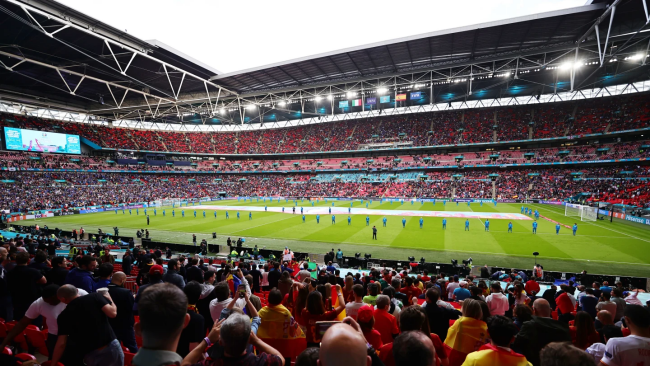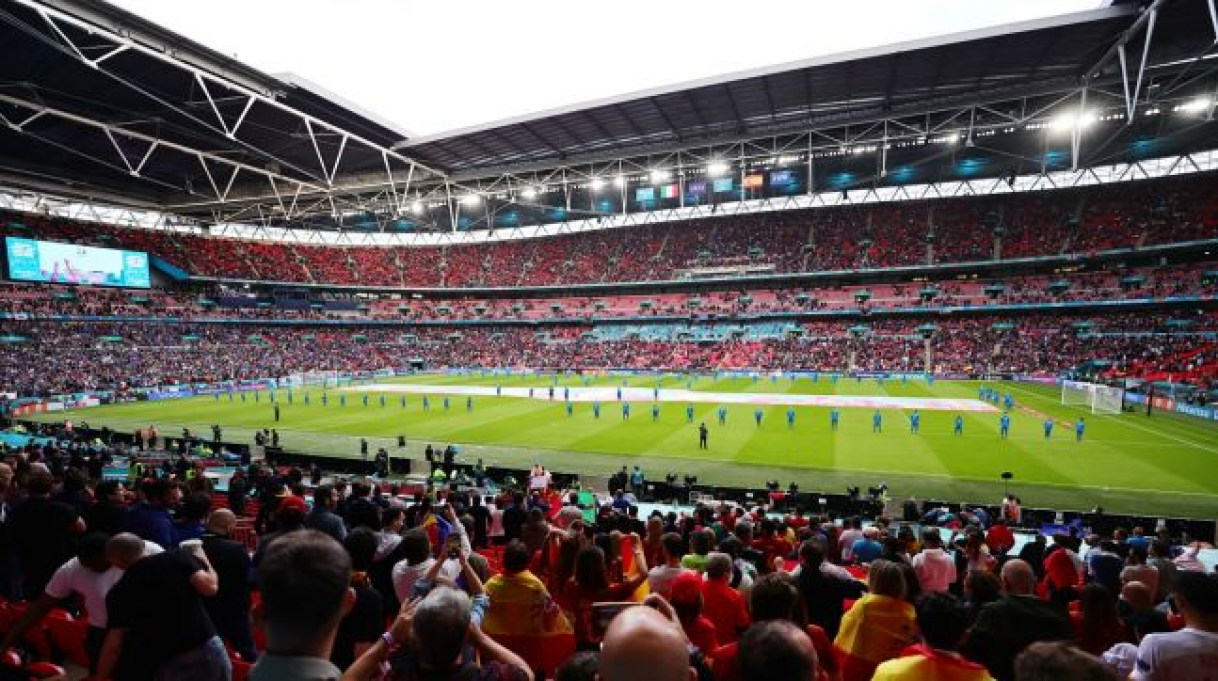Hallowed Turf: Legendary Football Stadiums
Any football game involving your favourite team is a festival for supporters of that team. The stadium where the game is played, and the game itself contribute to this atmosphere. Football stadiums are much more than just athletic venues. They are the heart of the game, where fans gather to support their preferred teams, and players experience the thrill of triumph and the pain of failure. Today, let’s highlight the most famous stadiums.

Football stadiums are the heart of the game
Football stadiums have become emotional epicenters of the game. They play an essential part in global athletic culture as birthplaces for legends and real-time chronicles of football history. These venues provide more than simply a place for sport. They see magnificent successes and humiliating failures. It infuses every aspect of the architecture with energy and adrenaline. Each one is a hub of football passion. The teams on the pitch get inspiration from thousands of supporters.
In addition to serving as places for games, football stadiums have a significant role in the global cultural and architectural legacy. They serve as emblems for nations, towns, and even whole continents. Stadiums blend historical significance, original architectural designs, and, of course, a very emotional environment.
Iconic stadiums
Today, football consists of many components. It is about players, matches, sports betting, match predictions, and the stadiums that host these games. All this plays a significant role in the formation of football. Take betting as an example. Its success depends on correct football score predictions. They include goal analysis and expected goals, date and time, venue, opponent strength, and tournament level. xGscore understands the importance of predictions. It uses these indicators to provide the most accurate predictions.
In the same way, legendary arenas also play an essential role for both fans and players. For some, it’s nostalgia. For others, it’s a monument to significant events. Let's take a look at the most legendary stadiums today.

Wembley, London, UK
London's Wembley is a legendary stadium with a fascinating past and a fantastic atmosphere. The stadium underwent full reconstruction in 2007 after opening in 1923. The European Football Championship in 1996 and the FIFA World Cup in 1966 both had matches held at Wembley. English football's iconic Wembley Stadium is home to major events.
Estadio Santiago Bernabéu, Madrid
Real Madrid, a globally renowned and highly thriving club, calls the arena its home. This venue regularly accommodates major football tournaments, including Champions League finals and other crucial matches. It stands as a symbol in the football world, holding significant events that have played a pivotal role in the sport's history.
Old Trafford, Manchester, England
Old Trafford, famously mentioned as the Theatre of Dreams, stands as one of England's most iconic stadiums and serves as the home ground for Manchester United. Within its walls, an ambiance of tension and intensity prevails. This revered stadium has strong connections to renowned figures in Red Devils and English football. It has been a witness to various stages of the Champions League and Europa League, hosting pivotal matches and celebrating victories. The grandeur extends to hosting competition finals, including significant events.
Allianz Arena, Munich
Bayern Munich holds its home games in the Allianz Arena north of Munich. The stadium's architecture is one of its unique features. Made of sturdy plastic, the roof and facade resemble diamond-shaped air cushions. It often hosts Bundesliga, German Cup, and Champions League competitions. A noteworthy moment in football history occurred during the 2012 final when Chelsea emerged victorious over Bayern Munich in a thrilling penalty shootout.
Santiago Bernabéu, Madrid, Spain
The team's emblem is the Santiago Bernabeu, Real Madrid's home. Fans are invited to this stadium to see one of the most victorious squads in football history play. Zinedine Zidane, Cristiano Ronaldo, and Alfredo Di Stefano called the stadium home. Constructed in 1947, the stadium can accommodate 81,044 spectators.
Anfield, Liverpool, England
Liverpool, one of England's most illustrious and established teams, calls Anfield home. The environment that Reds fans generate is special and helps the club reach new heights. The entire crowd chanting the team's anthem is mesmerizing. Supporters honor club heroes like Steven Gerrard and Kenny Dalglish at Anfield Stadium.
Maracana, Rio de Janeiro, Brazil
Maracana Stadium in Rio de Janeiro has 78 thousand seats. It opened in 1950. The FIFA World Cup finals of 1950 and 2014 occurred in the Maracanã. Maracana isn’t just a stadium. It’s also a national treasure. It’s a representation of Brazil and the site of the birth and development of Brazilian football.
Significance of legendary stadiums
These arenas are the birthplace of exceptional matches. The energy in the arena is palpable in every corner when large groups of supporters congregate. These are the reasons why legendary stadiums are essential:
- Passionate fan base
- Cultural gatherings
- Host major tournaments
- Entertainment hubs
- Team solidarity
- Sponsorship opportunities
Famous football stadiums are hallowed spaces. Here, the history is penned, and legends are created. These stadiums leave an enduring impression on the minds of players and supporters. They are the symbols of enthusiasm, devotion, and victory in football.
To cap it all, legendary stadiums develop passionate fan communities and act as cultural icons. They host essential competitions and serve as global centers of entertainment for fans. This explains their lasting significance. These places promote team spirit off the field and provide excellent sponsorship opportunities. Famous football stadiums leave an unforgettable impression. They are etched in the collective consciousness of both players and spectators as symbols of enthusiasm, dedication, and victory.
Cover Credit - Olympics.com


.png)


Leave a Reply